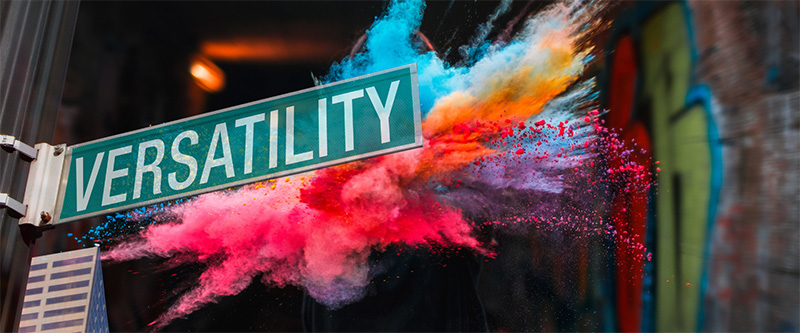UV štampa, poznata i kao ultraljubičasto štampanje, je moderna tehnika štampanja koja koristi ultraljubičasto svetlo za sušenje boja odmah nakon što se nanesu na površinu. Zbog svoje brzine, prilagodljivosti i kapaciteta za štampanje na različitim materijalima, koristi se u mnogim industrijama.
Evo kako UV štampa funkcioniše i kako se primenjuje: Kako funkcioniše UV štampa:
- Sastav boje: Specijalizovana UV boje koja sadrže fotoinicijatore koriste se u UV štampanju. Sve dok se ne podvrgnu ultraljubičastom (UV) svetlu, ova boja je u tečnom stanju.
- Procedura štampanja je lako uporediva sa tradicionalnim tehnikama štampanja uključujući ofset ili digitalnu štampu. Za nanošenje UV boja na površinu za štampanje koristi se štamparska ploča ili digitalni štampač.
- UV sušenje: Štampani predmet se podvrgava UV svetlu čim se nanese UV boja. Boja trenutno očvršćava ili se suši kao rezultat reakcije fotoinicijatora na UV svetlost. Postupak UV sušenja pretvara tečnu boju u čvrsti film, čineći ga trenutno suvim na dodir.
Prednosti i primena UV štampe:
- Brzo sušenje: U poređenju sa tradicionalnim tehnikama štampanja, UV štampa nudi brzo vreme sušenja. Štampanje velikog obima je idealno zbog sposobnosti brzog sušenja boje što ubrzava proizvodnju.
- Fleksibilnost: Širok spektar podloga, uključujući papir, karton, plastiku, staklo, metal i drvo, može se koristiti sa UV štampanjem. Pogodan je za širok spektar primena zbog svoje prilagodljivosti.
- Visok kvalitet: UV štampa daje otiske izuzetnog kvaliteta sa živim bojama i oštrim slikama. Otisci koji su svetli i detaljni nastaju zato što se osušeno mastilo taloži na površini, a ne da je apsorbuje podloga.
- Prednosti za životnu sredinu: Pošto se UV štampa trenutno suši, isparljiva organska jedinjenja (VOC) se emituju vrlo malo ili uopšte ne emituju. U poređenju sa konvencionalnim tehnikama štampanja, ovo ga čini ekološki odgovornim izborom.
- Otpornost: boja osušena UV zracima pružaju visok nivo otpornosti na mogućnost izbeljivanja, vlagu i ogrebotine, povećavajući robusnost i izdržljivost štampane robe.
- Jedinstveni efekti: UV štampa omogućava brojne jedinstvene efekte, uključujući izdignutu štampu, štampanje teksture i sjajne ili mat završne obrade, dajući štampanim proizvodima vrhunski izgled.
Primene UV štampanja: UV štampa se koristi u raznim industrijama, kao što su:
- Komercijalna štampa: flajeri, kartice, posteri i promotivni artikli. Etikete, kutije i fleksibilna ambalaža čine paket. Baneri, displeji i bilbordi na otvorenom su primeri znakova. Promotivna roba: personalizovani pokloni, pokloni i brendirana roba. Štampane ploče i oznake proizvoda su primeri elektronike.
- Kućni dekor: Štampanje na drvetu, staklu i keramici za dizajn enterijera.
- Industrijska primena: Štampa na panelima, delovima i komponentama za industriju.
Sve u svemu, UV štampa je prilagodljiva i efikasna tehnika štampanja koja je u potpunosti promenila posao štampanja obezbeđujući brzo vreme obrade, odličan kvalitet štampe i razne primene na različitim materijalima.

